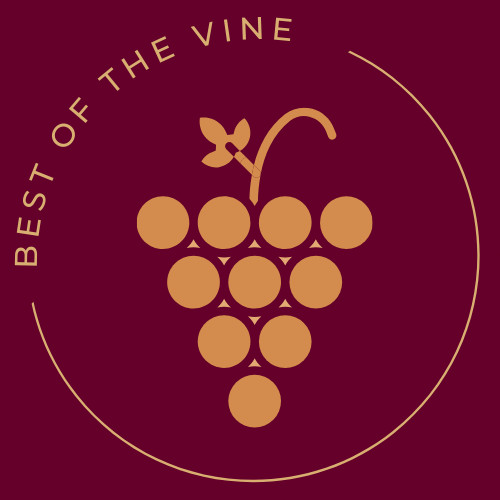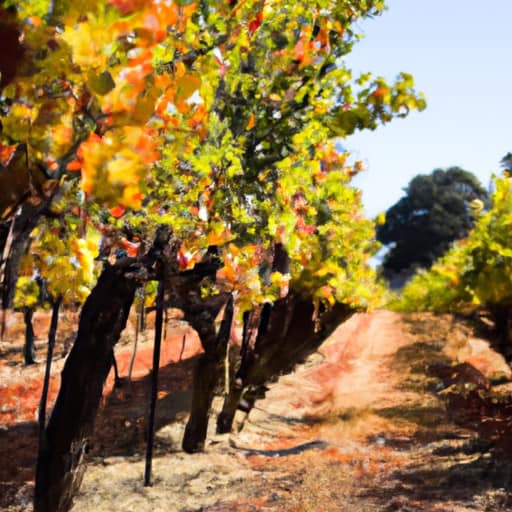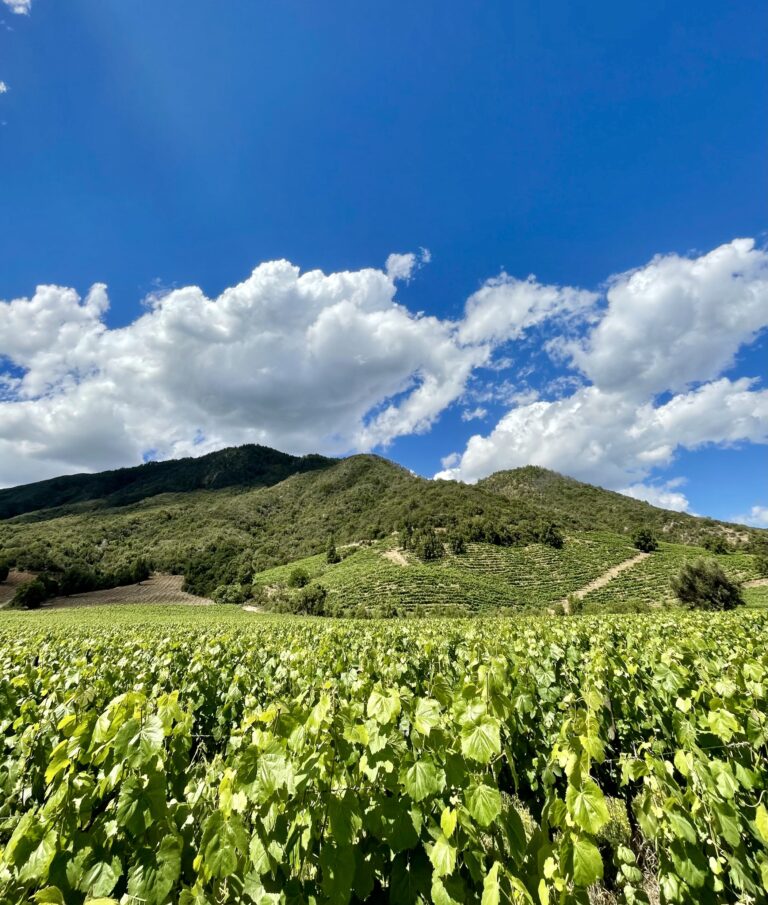Exploring the World’s Famous Wine Regions
Hello there! Ready to embark on a journey through the world’s famous wine regions? Get ready to sip and savor as we explore the enchanting vineyards and picturesque landscapes that produce some of the finest wines on the planet. From the rolling hills of Tuscany to the sun-kissed vineyards of Napa Valley, this article will take you on a delightful tour of wine and cheese regions that will leave you craving for more.
Curious to know which regions have earned their spot on the wine connoisseur’s map? Wondering about the unique characteristics that make each region’s wine so special? Look no further! This article will delve into the fascinating history, distinctive flavors, and legendary winemakers that have put these wine and cheese regions in the spotlight. Whether you’re a wine enthusiast or simply interested in discovering new places, exploring the world’s famous wine regions promises to be a delightful and educational experience. So sit back, pour yourself a glass of your favorite vintage, and get ready to take a sip of the world’s wine wonders!
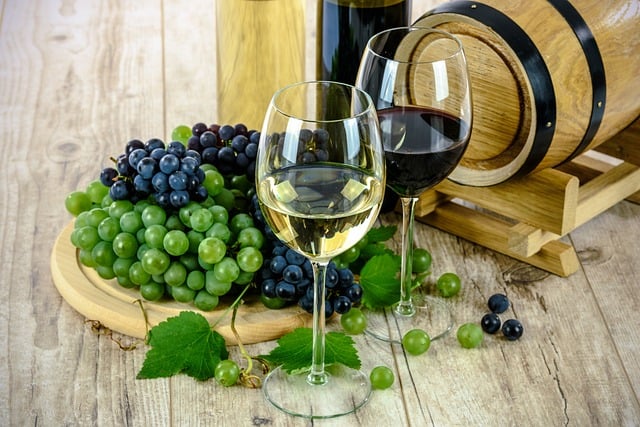
The significance of wine and cheese regions
When it comes to indulging in the finer things in life, few combinations can rival that of wine and cheese. The harmonious pairing of a well-aged cheese with a perfectly crafted wine has been celebrated for centuries. The synergy between these two culinary delights is not only a testament to the craftsmanship and artistry of winemakers and cheesemakers but also highlights the importance of geographic regions in creating these delicacies.
The concept of wine and cheese regions is deeply rooted in the idea of terroir, a French term that loosely translates to “a sense of place.” Terroir encompasses the unique environmental factors that influence a wine or cheese’s taste, aroma, and character. These factors include the soil, climate, topography, and other natural elements that shape the flavor profile of the end product.
Factors that contribute to the development of famous wine regions
Several factors combine to create the ideal conditions for developing famous wine regions. First and foremost, the soil composition is crucial in providing essential nutrients and minerals to the grapevines. Different soil types, such as limestone, clay, or gravel, imprint distinct characteristics on the grapes, resulting in wines with different flavors and textures.
The climate is another vital factor in the cultivation of grapes. While some grape varieties thrive in cooler climates, others require hot and dry conditions to reach their full potential. The interplay between sunlight, temperature, rainfall, and humidity all contribute to the ripening process and ultimately influence the taste and structure of the wine.
Topography also plays a significant role in the development of wine regions. Sloping hillsides provide optimal drainage, preventing excess water accumulation around the roots of the grapevines. This not only helps to avoid waterlogged soil but also encourages the vines to dig deeper into the ground in search of water and nutrients. As a result, the grapes develop more concentrated flavors and are less prone to disease.
Exploring the terroir: Soil, climate, and topography
To truly understand and appreciate the nuances of wine regions, one must delve into the concept of terroir. Let’s take a closer look at the role played by soil, climate, and topography in creating exceptional wines.
Soil
The importance of soil composition cannot be overstated regarding winemaking. The diversity in soil types across different wine regions contributes to the wide array of flavors and styles found in wines. For example, the chalky soils of Champagne in France impart a distinctive minerality to the region’s famous sparkling wines. Similarly, the volcanic soils of Mount Etna in Sicily, Italy, lend a unique character to the wines produced in this region.
Climate
The climate is a crucial factor that shapes the character of wines. In cooler climates, grapes have a longer growing season, allowing them to develop more acidity and subtle flavors. This is evident in the wines of Burgundy, France, known for their elegance and finesse. On the other hand, warmer climates result in riper grapes with higher sugar content, which can lead to more full-bodied and fruit-forward wines. Take, for example, the bold and robust red wines from the Napa Valley in California.
Topography
The topography of a wine region can have a profound influence on the final product. As found in the Mosel region of Germany, steep slopes can provide optimal sun exposure, leading to intense fruit flavors and high acidity in the resulting wines. In contrast, flat plains may produce wines with more moderate characteristics. The rolling hills of Tuscany, Italy, are known for their diverse topography, resulting in a range of wines from light and crisp whites to bold and structured reds.
Old World vs. New World Wine Regions
When exploring wine regions, it’s essential to understand the distinction between Old World and New World wines. The terms “Old World” and “New World” refer to the traditional wine-producing regions of Europe and the newer wine regions in countries outside Europe, respectively.
Understanding the distinction between Old World and New World wines
Old World wines are often characterized as being more terroir-driven, expressing the unique characteristics of their specific region. These wines have more subtle flavors and exhibit a sense of place. Examples of famous Old World wine regions include Bordeaux and Burgundy in France, Tuscany in Italy, and Rioja in Spain.
On the other hand, New World wines are typically associated with bolder fruit flavors, higher alcohol content, and more pronounced oak influence. These wines are often crafted using newer winemaking techniques and technologies, focusing on expressing the fruit rather than the terroir. Some famous New World wine regions include Napa Valley in California, Marlborough in New Zealand, and Mendoza in Argentina.
Exploring famous Old World wine regions
With its rich winemaking history, France is home to some of the most famous Old World wine regions. Bordeaux, located in southwestern France, is renowned for its red wines, characterized by a blend of grape varieties and aging in oak barrels. The region showcases the artistry of winemakers in crafting complex and age-worthy wines.
Burgundy, also in France, is often considered the epitome of terroir-driven wines. The region produces red and white wines, each with distinctive characteristics influenced by the specific vineyard locations, or “climates,” as they are known. Burgundy’s Pinot Noir and Chardonnay wines are highly sought for their elegance and delicacy.
In Italy, Tuscany is a region that needs no introduction. Known for its iconic Sangiovese-based wines, such as Chianti and Brunello di Montalcino, Tuscany offers a diverse range of wines. From the approachable and youthful Chianti Classico to the age-worthy and powerful Brunello, Tuscany has something for every wine lover.
Exploring famous New World wine regions
While the Old World has a long-established winemaking tradition, the New World has emerged as a force to be reckoned with in the world of wine. Often characterized by innovation and experimentation, these regions have carved out their distinct identities.
California’s wine regions, particularly Napa Valley and Sonoma County, are synonymous with quality wine production. Napa Valley, known for its Cabernet Sauvignon, showcases the unique combination of soil, climate, and winemaking expertise that has propelled it to international acclaim. Sonoma County offers more diverse grape varieties and wine styles, from Chardonnay and Pinot Noir to Zinfandel and Syrah.
South American wine regions have gained recognition for their outstanding wines in recent years. Argentina’s Mendoza region, located at the foothills of the Andes Mountains, is renowned for its Malbec wines. The high-altitude vineyards and sunny climate contribute to the development of deep and flavorful red wines.
With its cool maritime climate, New Zealand has become synonymous with world-class Sauvignon Blanc. Marlborough, located on the country’s South Island, produces vibrant and aromatic wines that have captivated wine lovers around the globe.

Iconic Wine Regions of Europe
The allure of European wine regions is undeniable. From the rolling vineyards of France to the sun-soaked hillsides of Italy, Europe is home to some of the most iconic wine-producing regions in the world. Let’s embark on a journey through the renowned wine regions of France, Italy, Spain, and Germany.
The renowned wine regions of France
France is often considered the epitome of winemaking excellence, with a diverse range of wines that cater to every palate. Bordeaux, located in southwestern France, is synonymous with red wine production. The region’s unique combination of gravelly soil, maritime climate, and winemaking traditions has resulted in some of the world’s most prestigious wines. From the grandeur of classified growths like Château Lafite Rothschild to more approachable wines from the Right Bank, Bordeaux offers something for every wine lover.
Burgundy, located in eastern France, is renowned for its terroir-driven wines. The region is divided into multiple appellations, each with its own distinct characteristics. The red wines, primarily crafted from Pinot Noir, are celebrated for their ethereal aromas and silky textures. Burgundy’s white wines, made from Chardonnay, exhibit a delicate balance of mineral flavors and vibrant acidity.
Champagne, located northeast of Paris, needs no introduction. This iconic wine region produces the world’s most famous sparkling wine. The unique chalky soil, combined with the cool climate and meticulous winemaking techniques, results in sparkling wines that are both elegant and refined. From the renowned houses of Krug and Dom Pérignon to smaller, family-owned growers, Champagne offers a delightful array of bubbling delights.
Unveiling the treasures of Italy’s wine regions
Italy’s rich winemaking heritage is a treasure trove of diverse and captivating wines. Tuscany, located in central Italy, is home to iconic wines such as Chianti and Brunello di Montalcino. Chianti, crafted primarily from Sangiovese, is known for its vibrant acidity and food-friendly nature. On the other hand, Brunello di Montalcino is a powerhouse red wine that showcases the full potential of Sangiovese.
In the northeast of Italy, the Veneto region boasts a range of distinctive wines, including the iconic Amarone della Valpolicella and Prosecco. Amarone, a rich and full-bodied red wine, is made from partially dried grapes, resulting in concentrated flavors and a luscious texture. Prosecco, a sparkling wine, is known for its refreshing fruitiness and lively effervescence.
Piedmont, nestled in the northwest, is celebrated for its elegant, age-worthy red wines. The region’s flagship grape variety, Nebbiolo, gives life to iconic wines such as Barolo and Barbaresco. These wines are characterized by their powerful structure, complex aromas, and the ability to age gracefully.
Exploring Spain’s diverse wine regions
Spain has a rich winemaking history and an impressive array of wine regions. Rioja, located in northern Spain, is perhaps the most famous. The region produces red and white wines, with Tempranillo as the primary grape variety. Rioja reds are known for their balance of fruit flavors, oak influence, and well-integrated tannins. White Rioja wines often exhibit a creamy texture and tropical fruit notes.
In the northeastern region of Catalonia, the world-famous region of Penedès has gained recognition for its sparkling wine, Cava. Made using the traditional method, Cava offers a more affordable alternative to Champagne while delivering exceptional quality. Penedès also produces still wines from native grape varieties, such as Xarel.lo and Macabeo, which showcase the region’s unique terroir.
Sherry, produced in the region of Jerez in southwestern Spain, is a fortified wine with a long and storied history. Made using Palomino Fino grapes, sherry comes in various styles, from dry and crisp Fino to rich and sweet Pedro Ximénez. The region’s unique solera aging system adds complexity and depth to the wines, making them a favorite among wine lovers worldwide.
Discovering the unique flavors of Germany’s wine regions
Germany, known for its precision and craftsmanship, is a country that produces wines with distinct character and finesse. With its steep slopes overlooking the meandering Mosel River, the Mosel region is famous for its Riesling wines. The cool climate and slate-rich soil create the perfect conditions for developing high acidity and vibrant fruit flavors in the wines. Mosel Rieslings are often characterized by their delicate floral aromas, zesty citrus notes, and a touch of sweetness.
Further south, the region of Baden offers a range of grape varieties and wine styles. From the fresh and mineral-driven whites of the Kaiserstuhl sub-region to the elegant and complex Spätburgunder (Pinot Noir) wines of the Markgräflerland, Baden showcases the diversity of wines Germany offers.
Discovering the New World Wine Regions
While the Old World has long been associated with winemaking, the New World has emerged as a dynamic and innovative player in the global wine industry. These regions outside of Europe are known for their diverse grape varieties, unique terroir, and commitment to quality winemaking. Let’s explore some of the notable New World wine regions.
Exploring the vastness of California’s wine regions
California, located on the western coast of the United States, is often referred to as the powerhouse of the New World wine industry. With its diverse climate and soil conditions, California offers a wide range of wine styles that cater to every taste.
Napa Valley, perhaps the most famous of California’s wine regions, is renowned for its Cabernet Sauvignon wines. The region’s warm days, cool nights, and well-draining soils provide the perfect conditions for Cabernet Sauvignon to thrive. Napa Valley’s wines often exhibit ripe fruit flavors, firm tannins, and a lush mouthfeel.
Sonoma County, located just west of Napa Valley, offers a more varied landscape and a broader range of grape varieties. From cool-climate Chardonnay and Pinot Noir in the Russian River Valley to bold and spicy Zinfandel in Dry Creek Valley, Sonoma County showcases the diversity of California winemaking.
Further south, the Central Coast region has many vineyards spanning Santa Barbara County to Monterey County. This area benefits from a cool maritime climate, producing wines with vibrant acidity and expressive fruit flavors. The region is known for producing exceptional Chardonnay and Pinot Noir and Rhône varietals such as Syrah and Grenache.
Uncovering the secrets of South American wine regions
South America has emerged as a formidable player in the world of wine, with regions gaining recognition for their unique terroir and exceptional wines. Two countries, in particular, have captured the attention of wine enthusiasts worldwide: Argentina and Chile.
Argentina’s premier wine region, Mendoza, is situated at the foothills of the Andes Mountains. The high altitude and the sunny and dry climate create ideal conditions for grape cultivation. Malbec, the country’s flagship grape variety, thrives in Mendoza, producing wines with intense fruit flavors, firm tannins, and a velvety texture. Mendoza is also known for its Cabernet Sauvignon, Syrah, and Bonarda wines.
With its long and narrow strip of land stretching along the western coast of South America, Chile showcases a wide diversity of terroirs. The Maipo Valley, located near the capital city of Santiago, is celebrated for its bold and structured Cabernet Sauvignon wines. The Casablanca Valley, located closer to the Pacific Ocean, produces vibrant and aromatic white wines, particularly Sauvignon Blanc and Chardonnay. Other notable regions include the Colchagua Valley, known for its Carmenere, and the Aconcagua Valley, renowned for its Syrah and Cabernet Sauvignon.
New Zealand’s thriving wine industry
With its breathtaking landscapes and pristine natural environment, New Zealand has gained recognition for producing exceptional cool-climate wines. The country’s wine industry is centered around two main islands: the North Island and the South Island.
Marlborough, located on the northeastern tip of the South Island, is New Zealand’s most famous wine region. The region is primarily known for its Sauvignon Blanc, which has garnered international acclaim for its vibrant acidity, intense aromatics, and tropical fruit flavors. In addition to Sauvignon Blanc, Marlborough produces high-quality Pinot Noir, Chardonnay, and sparkling wines.
Further south, Central Otago is the southernmost wine region in the world and is renowned for its Pinot Noir. The region’s cool climate and challenging soils result in wines with elegance, intensity, and a distinct varietal character. Central Otago’s Pinot Noir wines often display ripe red fruit flavors, silky tannins, and a long, mineral-driven finish.

Exploring Lesser Known Wine Regions
While famous wine regions often steal the spotlight, there are numerous hidden gems and emerging wine regions that deserve recognition. These lesser-known areas offer unique terroir, innovative winemaking techniques, and the chance to discover something new and exciting. Let’s explore some of these wine regions off the beaten path.
Hidden gems: Wine regions off the beaten path
Portugal’s Douro Valley, often overshadowed by its famous Port wine production, has recently experienced a renaissance. With its steep terraced vineyards overlooking the Douro River, the region produces exceptional Port and high-quality still wines. Douro’s red wines, crafted from indigenous grape varieties such as Touriga Nacional and Touriga Franca, are known for their power, complexity, and ability to age gracefully.
In Greece, the island of Santorini offers a unique and captivating wine experience. The volcanic soil and the island’s dry and windy climate give rise to distinctive white wines made from the indigenous Assyrtiko grape. Santorini’s Assyrtiko wines often exhibit crisp acidity, saline minerality, and citrusy flavors, making them a perfect accompaniment to fresh seafood.
Emerging wine regions to watch out for
As the world of wine continues to evolve, new and exciting wine regions are emerging, pushing boundaries and challenging conventions. One such region is Oregon’s Willamette Valley, located in the Pacific Northwest of the United States. Willamette Valley is best known for its exceptional Pinot Noir, often compared to Burgundy’s wines. The region’s cool climate and diverse soils create wines with ripe fruit flavors, vibrant acidity, and underlying earthy complexity.
In South Africa, the region of Swartland is making a name for itself with a focus on organic and sustainable winemaking. Situated north of Cape Town, Swartland has gained recognition for its old-vine vineyards and the production of vibrant, terroir-driven wines. Swartland’s wines showcase the region’s commitment to quality and innovation, from Chenin Blanc and Syrah to unique blends.
Wine and Cheese Pairings by Region
The marriage of wine and cheese is a match made in heaven. The interplay of flavors, textures, and aromas creates a sensory experience that harmonizes the best qualities. Each wine region has its own unique style of wine and local cheese, resulting in classic pairings that truly highlight the terroir of the respective regions.
Classic wine and cheese pairings from famous regions
In France, the Burgundy region is renowned for its delicate and nuanced wines, especially its white Burgundy made from Chardonnay grapes. These wines pair beautifully with an aged Comté’s creamy, buttery flavors or the earthy richness of a well-aged Epoisses.
In Italy, the Tuscan region produces elegant and rustic wines, such as Chianti and Brunello di Montalcino. These red wines pair wonderfully with the rich and nutty flavors of a Pecorino cheese or the savory and herbaceous notes of a young Parmigiano-Reggiano.
In Spain, the Rioja region’s red wines, with their ripe fruit flavors, toasted oak, and subtle spice, make an ideal match for Manchego cheese’s nutty and caramel flavors. The creamy and slightly tangy flavors of Murcia al Vino, a Spanish sheep’s milk cheese soaked in red, complement the region’s wines beautifully.
Unusual wine and cheese combinations worth trying
While classic pairings are always a safe bet, some unexpected combinations can yield delightful results. One such pairing is a pairing of a New Zealand Sauvignon Blanc with goat cheese from Loire Valley, France. The lively acidity and vibrant tropical fruit flavors of the Sauvignon Blanc contrast nicely with the tangy and creamy flavors of the goat cheese.
Another interesting combination is a full-bodied Cabernet Sauvignon from California’s Napa Valley with a blue cheese like Roquefort from France. The wine’s bold fruit flavors and firm tannins help to balance the pungent and salty qualities of the blue cheese, resulting in a harmonious juxtaposition of flavors.
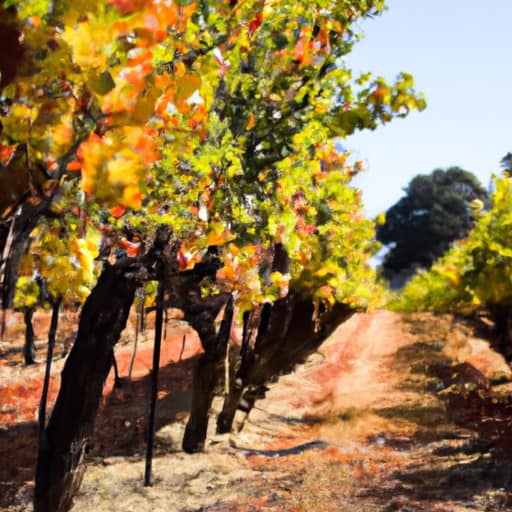
Sustainable Practices in Vineyards
In recent years, there has been a growing awareness of the importance of sustainability in the wine industry. Vineyard owners and winemakers worldwide are embracing organic and biodynamic practices and implementing innovative approaches to reduce the environmental impact of wine production.
The importance of sustainability in wine regions
Sustainability in vineyards goes beyond just growing grapes organically. It encompasses a holistic approach to vineyard management, considering the long-term health of the vines, the surrounding ecosystem, and the well-being of the workers. By adopting sustainable practices, vineyards can reduce their reliance on synthetic pesticides and fertilizers, conserve water, and protect biodiversity.
Sustainable vineyards also contribute to the soil’s overall health, ensuring that it remains fertile and capable of supporting healthy vine growth. This, in turn, leads to the production of high-quality grapes and, ultimately, exceptional wines.
Organic and biodynamic practices in winemaking
Organic winemaking involves growing grapes without synthetic pesticides, herbicides, or fertilizers. Instead, natural and organic alternatives are used to manage pests, weeds, and diseases. This approach promotes biodiversity and helps to maintain the health of the soil.
Biodynamic winemaking takes organic practices a step further. It incorporates holistic principles and seeks to create a self-sustaining ecosystem in the vineyard. Biodynamic vineyards follow a lunar calendar and utilize various preparations, such as compost teas and herbal sprays, to enhance soil vitality and vines.
Both organic and biodynamic practices have gained traction in wine regions worldwide as consumers increasingly prioritize sustainability and environmental responsibility.
Innovative approaches to reducing environmental impact
In addition to organic and biodynamic practices, winemakers are exploring innovative approaches to reduce their environmental impact. This includes using renewable energy sources, such as solar panels, to power wineries and vineyard operations. Some wineries are also implementing water conservation measures, such as installing drip irrigation systems and using recycled water for irrigation.
Packaging is another area where wineries are making strides toward sustainability. Many producers opt for lightweight bottles or alternative packaging options, such as bag-in-box or Tetra Paks, which require less energy and produce fewer greenhouse gas emissions during production and transportation.
By adopting these innovative approaches, wineries can reduce their carbon footprint and position themselves as leaders in sustainable winemaking.
Unique Wine Experiences in Famous Regions
Exploring wine regions is not just about tasting exceptional wines; it’s also about immersing oneself in the region’s culture, history, and traditions. From wine festivals and vineyard tours to indulging in wine and gastronomy, there are countless ways to create memorable wine experiences.
Wine festivals and events
Wine festivals allow for discovering new wines, meeting winemakers, and celebrating the local wine culture. In France, the Bordeaux Wine Festival is a grand event that attracts wine lovers worldwide. The festival offers the chance to taste wines from the region’s prestigious châteaux, attend wine seminars and workshops, and enjoy live music and fireworks.
In Italy, the annual VinItaly in Verona is one of the largest wine fairs in the world. The event showcases wines from all across Italy, allowing visitors to sample various wines and learn about the country’s diverse winemaking traditions.
Vineyard tours and tastings
Vineyard tours and tastings are an excellent way to gain insight into the winemaking process and appreciate the unique terroir of a region. These experiences often include a guided tour of the vineyards and winery and a tasting of the wines produced on-site.
In Napa Valley, California, vineyard tours offer the opportunity to explore the picturesque vineyards, learn about the winemaking techniques employed, and taste a selection of wines in a relaxed and scenic setting. Many wineries also offer food and wine pairings, allowing visitors to savor the local cuisine alongside the wines.
In the Douro Valley of Portugal, vineyard tours glimpse the centuries-old tradition of Port wine production. Visitors can explore the terraced vineyards, visit historic cellars, and sample a range of ports, from tawny and vintage to the sweet and silky LBV (late bottled vintage).
Indulging in wine and gastronomy
The culinary arts play an integral role in wine regions, as the local cuisine often complements the wines produced in the area. Gastronomic experiences, such as wine and food pairing dinners or cooking classes, allow visitors to fully appreciate the interplay between wine and local dishes.
In Tuscany, Italy, visitors can embark on a journey of gastronomic delights, from indulging in a hearty Florentine steak paired with a glass of Chianti to participating in a cooking class where they can learn to prepare traditional Tuscan dishes like homemade pasta.
Visitors can partake in a traditional tapas crawl in Spain’s Rioja region, sampling the region’s renowned red wines alongside small plates of delicious local delicacies. From succulent jamón ibérico to flavorful chorizo, these traditional tapas perfectly complement the region’s wines.
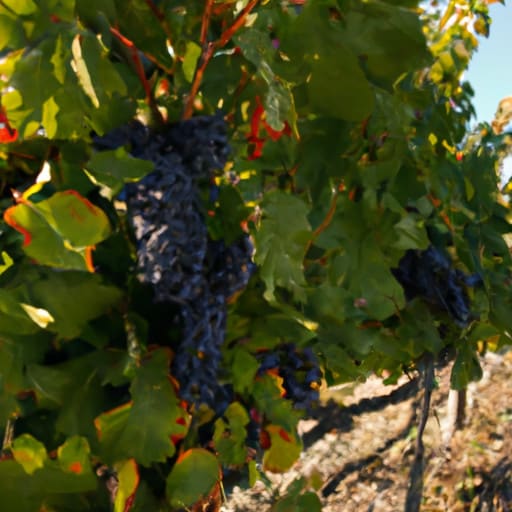
The Influence of Wine Regions on Culinary Arts
Wine regions have a significant influence on culinary arts, shaping the local cuisine and inspiring the creation of iconic dishes. From the choice of ingredients to the cooking techniques, wine regions leave an indelible mark on the traditional dishes associated with the area.
How wine regions shape local cuisine
The interplay between wine and food is intrinsic to the culinary traditions of wine regions. Local dishes often incorporate the flavors and ingredients that complement the wines produced in the area.
In France’s Bordeaux region, the rich and bold red wines pair perfectly with the region’s hearty cuisine. Classic dishes such as confit de canard (duck confit) and entrecôte bordelaise (steak with Bordeaux wine sauce) are prepared with robust flavors to match the intensity of the wines.
In Italy, the gastronomy of the Piedmont region is heavily influenced by the wines produced there. The region’s wines, such as Barolo and Barbaresco, are often referred to as “the wines of kings.” These elegant and powerful red wines pair beautifully with the region’s iconic dishes, such as tajarin pasta with white truffle or brasato al Barolo (braised beef in Barolo wine).
Famous dishes inspired by wine regions
Wine regions have also given rise to iconic dishes that have transcended their local origins and become beloved worldwide.
In Spain’s Rioja region, the rustic and flavorsome dish known as patatas a la riojana showcases the region’s famous Rioja wine. This hearty stew, made with potatoes, chorizo, and red peppers, is cooked with Rioja wine, infusing the dish with its rich and robust flavors.
In Germany’s Mosel region, the traditional dish of Saumagen pays homage to the region’s wines. Saumagen, or “stuffed pig’s stomach,” is prepared with pork, potatoes, and a medley of spices. The dish’s savory flavors and hearty nature make it an ideal accompaniment to the region’s crisp and mineral-driven Riesling wines.
Conclusion
Embarking on a journey through the world’s famous wine regions is a delightful exploration of culture, history, and, most importantly, exceptional wines. From the Old World to the New World, from France to New Zealand, each region offers a unique terroir, diverse grape varieties, and a rich winemaking heritage that is waiting to be discovered.
Exploring the world’s famous wine regions is not just about savoring exceptional wines; it’s about immersing oneself in the flavors, aromas, and traditions of the local cuisine. The myriad of wine and cheese pairings, the sustainable practices in the vineyards, and the unique wine experiences that each region has to offer make for an unforgettable journey into the artistry and diversity of fine wines.
So, whether you find yourself sipping a bold and robust Cabernet Sauvignon from Napa Valley or indulging in a crisp and vibrant Sauvignon Blanc from Marlborough, take the time to appreciate the craftsmanship and dedication that go into every bottle. Cheers to the world’s famous wine regions, where wine and adventure await!
